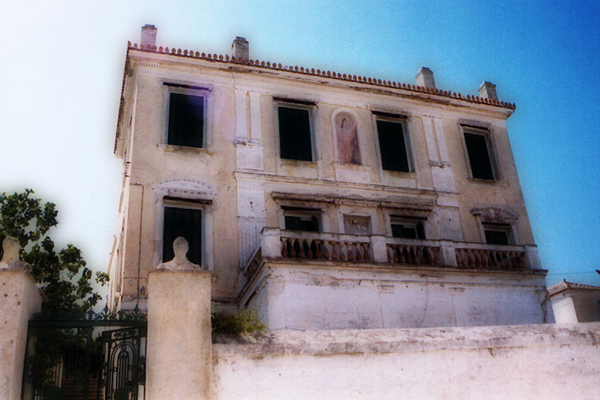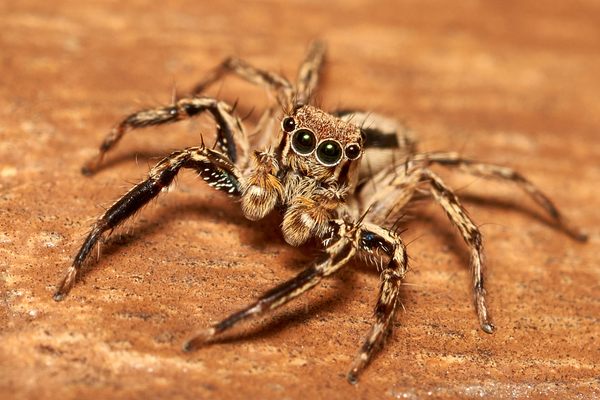Wonder Is Everywhere: The World’s Oldest Trees, the Heaviest Ball of Twine, and More From Around the Web
Get a peek into what we’re obsessed with right now.
Wonder is everywhere. That’s why, every other week, Atlas Obscura drags you down some of the rabbit holes we encounter as we search for our unusual stories. We highlight surprising finds, great writing, and inspiring stories from some of our favorite publications.

In Search of the World’s Oldest Trees
by Jared Farmer, BBC Future
There are about 140,000 species of trees, shrubs, and vines on the planet. Of those, about 30 are known to live more than 1,000 years. A tour of the world’s “Old Ones” stretches from the churchyard yews of the United Kingdom to the ficus at the center of the Buddhist pilgrimage site in Anuradhapura, Sri Lanka, to the bristlecone pines of the Great Basin in Nevada and California. Some of these pines have stood for almost 5,000 years.
Scrolls That Survived Vesuvius Divulge Their First Word
by Nicholas Wade, The New York Times
A technique used in CT scans supplemented with artificial intelligence has revealed the first word on a scroll that was carbonized—all but destroyed—by the eruption of Mount Vesuvius in A.D. 79. It says porphyras, the Ancient Greek word for “purple.”
Venezuela’s Tepui Frogs Can’t Climb Any Higher
by Luke Taylor, The Guardian
Venezuela’s remote tepui—10,000-foot-high, desert-like sandstone plateaus—are home to creatures seen few other places on Earth. Pebble toads, which curl up like tiny hedgehogs and roll away from predators, and waterfall toads that fling themselves from tree branches to safety below, have adapted to the harsh environment. But as global temperatures warm, and animals from lowlands seek relief from the heat at higher altitudes, there is nowhere left for them to climb.

Glasgow Museum Loses Auguste Rodin Sculpture
by Paul Drury and Alex Farber, London Times
One of the figures of Auguste Rodin’s Les Bourgeois de Calais has been listed as “unlocated”—missing, or at least misplaced in the Glasgow Museums archives for decades. The six-foot-tall plaster sculpture, valued at about $3.2 million, was last on display in Kelvingrove Park in 1949. It is one of approximately 1,750 objects reported to have disappeared from Scottish museums.
Found: A Catapult Designed to Launch Planes
by Laura Geggel, LiveScience
Archaeologists in England have excavated a catapult that dates not to ancient Greece but to World War II. The Royal Aircraft Establishment Mark III Catapult was built in southeastern England as an experiment: Could warplanes be propelled into the air to save on runway space and fuel? (The answer in this case was “no,” though aircraft catapults are in common use today, particularly on aircraft carriers.)
Vibrant Paint Once Decorated Parthenon Marbles
by Teresa Nowakowski, Smithsonian Magazine
The sculptures that adorned the Parthenon in Athens in the fifth century B.C. were not the brilliant white we see today. Sculptures from antiquity were probably painted brilliant colors, and for the first time, researchers have discovered microscopic traces of blue, purple, and white pigments on the famed reliefs. But the new findings aren’t detailed to recreate the originals. “Knowing the pigments is just not enough,” says one researcher.

Town Rallies to Preserve World’s Heaviest Ball of Twine
by Keith Uhlig, Wisconsin State Farmer
Over nearly 44 years, James Frank Kotera wove together pieces of twine to create a 24,100-pound ball that attracted the curious to his gazebo in a small town in Wisconsin. When JFK, as he was known, passed away in January 2023, the future of the passion project was in jeopardy—until neighbors pitched in, raising thousands of dollars to move the ball to town land and preserve it.
Remembering the Triangle Shirtwaist Factory Fire
by David Von Drehle, Washington Post
More than a century after a devastating fire killed 146 people at the Triangle Shirtwaist Factory in Manhattan, a new monument to the lives lost has been unveiled. The Brown Building—which housed the factory in 1911—now bears the name of every victim, many of them women who emigrated from Italy and Eastern Europe.




























































Follow us on Twitter to get the latest on the world's hidden wonders.
Like us on Facebook to get the latest on the world's hidden wonders.
Follow us on Twitter Like us on Facebook